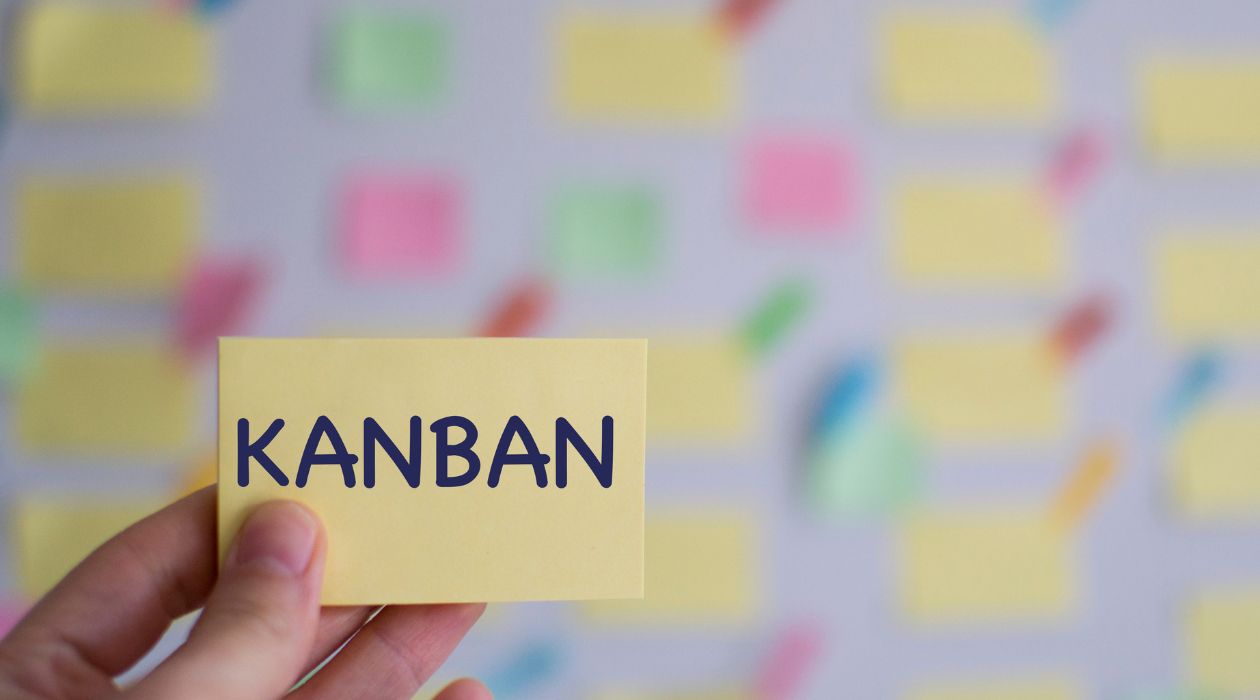What are Kanban and Scrum? Well, these are popular tools that contribute to agile process development. Thanks to these methods, boosting efficiency and improving the procedure is as smooth as a cakewalk. Whether you are in software development or product management, Kanban vs. Scrum is always the hot topic. It has been ruling the limelight for quite a few years now.
To gain more insights about these tools, all you need to do is check out this article. It talks about Kanban versus Scrum process management philosophies in software development projects related to industry sectors like healthcare, education, etc., where continuous improvement of quality work through iteration is necessary.
What is Kanban?
Kanban typically refers to ‘signboard’ in Japanese. It is a visual system that is used to deal with work proceedings. By identifying bottlenecks, you can now fix them in a cost-effective and rapid manner. All you need is a Kanban board- either physical or digital. Kanban is undoubtedly one of the most prominent options among today’s DevOps and Agile software teams. However, this process was implemented 50 years back.
It is a non-disruptive evolutionary change management system. What do you understand by this statement? It simply means you can improve the existing process in small steps. Professionals often consider incorporating these minor changes, thus reducing the overall risk. Check out the principles and practices of Kanban stated below in this article.
Four foundational principles of Kanban include:
- You need to begin with whatever you are doing now
- Make sure to pursue evolutionary, incremental change
- Consider respecting current responsibilities, roles, and job titles
- Participate in encouraging different acts of leadership
Some of the core practices of the Kanban method include the following:
- Visualize the work’s flow
- Limit work in progress or WIP
- Manage flow
- Implement feedback loops
- Make process policies explicit
- Evolve experimentally
- Improve collaboratively
Go through the benefits of Kanban mentioned below in this write-up:
- Kanban helps you to divide work into simplified tasks
- You can get access to all relevant piece details in one place
- It paves the way for creating an efficient workflow
- You will be able to improve or change the process over time
- Kanban can be adjusted to fit any company or team
- It can get well with a wide range of software
- Increases productivity
- Reveals bottlenecks
- Encourages collaboration
- Waste is eliminated
Teams using Kanban never fail to embrace these values:
- Transparency
- Collaboration
- Balance
- Customer Focus
- Leadership
- Flow
- Agreement
- Understanding
- Respect
What is Scrum?
It is an Agile development methodology typically applied in software development. Scrum is based on incremental and iterative procedures. Scrum is a fast, adaptable, effective, and flexible agile framework exclusively designed to deliver proper value. The core aim of Scrum revolves around satisfying the requirements and needs of the customer. Scrum paves the way toward achieving collective responsibility, transparency in communication, and continuous progress. Some of the roles in Scrum consist of the following:
- Scrum Master
- Product Owner
- Development Team
Check out the crucial advantages of using Scrum:
- Scrum is easily scalable
- It is extremely flexible to changes
- Compliance of expectations
- Time to market reduction
- Timely prediction
- High software quality
- Reduction of risks
- Increased ROI or return on investment
- Productive and happier teams
- Improved estimation
Take a look at the events in Scrum:
- Sprint
- Sprint planning
- Daily Scrum
- Sprint review
- Sprint Retrospective
Mentioned below are some of the Scrum artifacts:
- Product Backlog (PB)
- Sprint Backlog (SB)
- Increment
The Scrum principles include:
- Transparency
- Adaptation
- Reflection
Check out the Scrum values for development teams:
- Commitment
- Courage
- Focus
- Openness
- Respect
Difference between Kanban and Scrum
| Categories | Kanban | Scrum |
|---|---|---|
| Roles | Kanban doesn’t have any defined roles. | Some of the Scrum roles typically include product owner, scrum master, and development team |
| Delivery Policy | The delivery cycle in Kanban is continuous | In Scrum, the sprint cycle tends to last for one to four weeks |
| Change Policy | You can incorporate changes in Kanban anytime you feel like | Changes are not made during sprint in Scrum |
| Artifacts | Artifacts in Kanban include Kanban board | Artifacts included in Scrum are product backlog, product increments and sprint backlog |
| Tools | Some of the tools are Jira Software, SwiftKanban, Kanbanzie, Asana and Trello | Scrum tools usually include JiraSoftware, VivifyScrum, Axosoft, Target Process |
| Key Concepts or Pillars | Kanban is predictable, effective and of course, efficient | The concepts in Scrum revolve around adaptation, transparency and inspection |
| Origin | The origin of Kanban is lean manufacturing | The origin of Scrum is software development |
| Ideology | Kanban uses visuals, thus improving work-in-progress | In Scrum, you will get the scope of learning through self-organization, experiences and prioritize. It reflects on losses and wins to improve continuously |
| Practices | Here; you need to focus on visualizing the workflow, limiting WIP or work-in-progress, incorporating feedback loops, and managing flow | The practices involved in Scrum are sprint planning, daily scrum, sprint, sprint review, sprint retrospective |
| Delegation, and Prioritization | Kanban generally uses a ‘pull system.’ Apart from that, it also uses a systematic workflow that enables the team members to ‘pull’ brand new tasks after the completion of the previous one | While Scrum pays attention to using a ‘pull system’ as well, an entire batch is pulled here for every iteration |
| Measurement of Productivity | In Kanban, measurement is, done through ‘cycle time’ or the overall time taken to finish off the given project from beginning to end, | On the other hand, Scrum tends to measure production with the help of velocity |
| Best Applications | Kanban is best for those projects that come with varying priorities | Scrum is suitable for projects with stable priorities. |
| Work in Progress | Work in progress in Kanban is ongoing. | WIP is decided by the scrum team |
| Inspect and Adapt | There is no such mechanism to inspect and adapt in Kanban | There are plenty of opportunities in Scrum to inspect and adapt |
| Customer or Stakeholder | Doesn’t engage customers or stakeholders | Scrum involves the active customers and stakeholders |
The bottom line
According to statistics, it is quite evident and clear that Agile projects deal with a 64% success rate. What are you waiting for? Incorporate these methodologies in your projects now.




